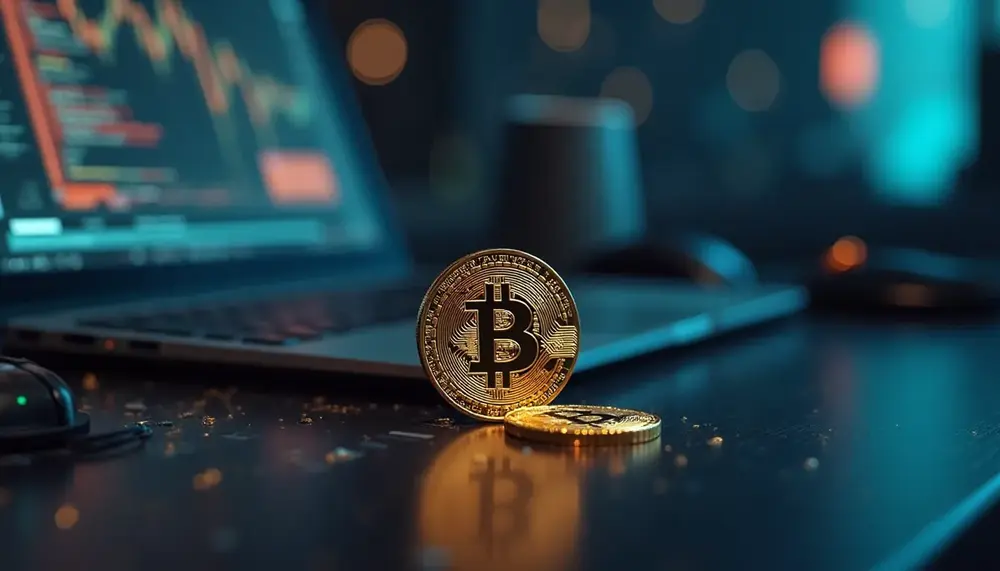Table of Contents:
Unveiling the Mystery: Who Made Bitcoin? – An Introduction
Unveiling the Mystery: Who Made Bitcoin? sparks curiosity for a reason. Unlike most inventions, Bitcoin’s creator is not a public figure, but a puzzle. The true identity behind this revolutionary digital currency remains unknown, making the question who made Bitcoin a central topic in both tech and finance circles.
Why does this matter? The mystery is not just about a name. It’s about understanding the intentions, technical vision, and even the possible risks tied to Bitcoin’s origin. The search for the real creator has led to debates, investigations, and countless theories. Each new piece of evidence—emails, forum posts, cryptographic proofs—brings more questions than answers.
The Best Mining Providers at a Glance
» Infinity HashFrom our perspective, currently the best mining provider on the market. With the community concept, you participate in a mining pool completely managed by professionals. A portion of the earnings are used for expansion and maintenance. We've never seen this solved as cleanly anywhere else.
» Hashing24A well-known and established cloud hosting company. With a good entry point and in a good market phase, a good ROI can also be generated with some patience. Unfortunately, we see the durations as a major drawback.
This article dives straight into the heart of the enigma. It explores direct clues, analyzes the original documents, and highlights the ongoing hunt for truth. If you’re looking for a complete, fact-based overview of who made Bitcoin, you’re in the right place. The following sections offer a roadmap through the most credible findings and unresolved mysteries, all aimed at one thing: bringing you closer to the answer.
The Satoshi Nakamoto Enigma: Origin of the Bitcoin Creator
The enigma of Satoshi Nakamoto is unlike any other in the tech world. The name first appeared in 2008, attached to the original Bitcoin whitepaper. Yet, no verifiable personal details have ever surfaced. This pseudonym could represent a single genius, a small team, or even a larger collective. Nobody knows for sure.
What sets Nakamoto apart is the complete absence of a digital footprint before Bitcoin. No previous academic publications, no social media, not even a trace in cryptography circles. Every message, code commit, and forum post linked to Nakamoto was carefully crafted to avoid revealing any personal clues. Even the choice of British and American spelling in communications has fueled speculation about their background.
After launching Bitcoin, Nakamoto continued to interact with early users and developers for about two years. Then, without warning, all communications stopped. The sudden silence left the community with only Nakamoto’s writings and code as evidence. This vanishing act has deepened the mystery, turning the question of who made Bitcoin into a legend that refuses to fade.
Key Clues: Communications and Actions by Nakamoto
Several key clues about who made Bitcoin emerge from Satoshi Nakamoto’s digital trail. These traces, though limited, offer rare glimpses into the mind and habits of Bitcoin’s elusive creator.
- Writing Style: Nakamoto’s messages show a consistent, polite tone. The language is clear, technical, and sometimes formal. Spelling and phrasing switch between British and American English, which confuses any attempt to pinpoint nationality.
- Technical Expertise: Nakamoto’s code reveals deep knowledge of cryptography, C++ programming, and peer-to-peer networks. The creator solved several long-standing problems in digital money with practical, original solutions.
- Communication Patterns: Most posts and emails were sent at times that suggest a possible European or Asian time zone. However, this could be intentional misdirection.
- Withdrawal: After 2010, Nakamoto gradually reduced direct involvement. The final message, sent in 2011, stated a shift to “other things.” No further verifiable contact has occurred since.
- Bitcoin Holdings: Nakamoto’s known wallets contain about one million bitcoins. These coins have never moved, which many see as a sign of principle or caution.
Each clue adds a piece to the puzzle, but none alone reveal the full answer to who made Bitcoin. The careful, calculated actions by Nakamoto continue to fuel debate and investigation.
Breaking Down the Whitepaper: Direct Evidence from the Source
The original Bitcoin whitepaper, published under the name Satoshi Nakamoto, remains the most direct evidence available about who made Bitcoin. This document, just nine pages long, outlines the core principles and technical architecture of the system. Its language is concise, methodical, and focused on practical solutions to digital cash problems.
- Technical Precision: The whitepaper demonstrates advanced understanding of cryptography, distributed systems, and economic incentives. The author avoids academic jargon, favoring clarity and real-world examples.
- References: Citations in the document point to both well-known cryptographers and lesser-known researchers. This suggests the author had broad, in-depth knowledge of the field.
- Unique Approach: The proposal for a decentralized timestamp server using proof-of-work was not found in prior literature. This original idea set Bitcoin apart from earlier digital money attempts.
- Intentional Anonymity: The whitepaper reveals nothing personal about its author. There are no self-references, anecdotes, or hints about background or motivation.
Examining the whitepaper closely, experts agree it was written by someone with both practical engineering skills and a strong grasp of economic theory. While the document itself does not unmask who made Bitcoin, it stands as a technical fingerprint—unique, detailed, and still unmatched in its clarity.
Popular Suspects: Investigating Claims and Theories
Over the years, the quest to answer who made Bitcoin has produced a list of high-profile suspects. Each theory is built on technical skills, timing, or circumstantial links, but none have been proven. Here are some of the most discussed names:
- Hal Finney: A renowned cryptographer and the first person to receive a Bitcoin transaction. Finney’s early involvement and coding expertise make him a leading candidate, though he always denied being Nakamoto.
- Nick Szabo: Creator of “bit gold,” a digital currency concept similar to Bitcoin. Szabo’s writing style and technical background are often compared to Nakamoto’s, but he has repeatedly denied any connection.
- Dorian Nakamoto: A California engineer whose name matches the pseudonym. Despite intense media attention, Dorian has consistently stated he is not involved.
- Craig Wright: An Australian computer scientist who publicly claimed to be Satoshi Nakamoto. His evidence has been widely disputed and remains unconvincing to most experts.
- Wei Dai: Inventor of “b-money,” cited in the Bitcoin whitepaper. Dai’s cryptographic knowledge and timeline align, but he has denied any involvement.
Other theories suggest a group effort rather than a single genius. Some even point to collective work by members of the early cypherpunk movement. Despite extensive analysis, the real identity behind who made Bitcoin remains unconfirmed, keeping the debate alive.
Case Example: The Hal Finney Connection
Hal Finney stands out as a fascinating case in the search for who made Bitcoin. Unlike other suspects, Finney’s involvement with Bitcoin began at its very inception. He received the first-ever Bitcoin transaction directly from Satoshi Nakamoto, marking him as a central figure in the project’s early days.
- Finney was an accomplished cryptographer and a respected member of the cypherpunk community, contributing to projects like PGP and reusable proof-of-work systems.
- His personal emails, later made public, reveal direct technical exchanges with Nakamoto, focusing on debugging and improving the Bitcoin software. These conversations show deep trust and technical alignment between the two.
- Analysis of Finney’s own code contributions highlights similarities in programming style and problem-solving approach to the original Bitcoin client, though not enough to prove authorship.
- Finney’s physical location, just a few blocks from another prominent suspect, Dorian Nakamoto, added fuel to speculation, but no concrete link has been established.
- Until his passing in 2014, Finney consistently denied being Satoshi Nakamoto, and no evidence has surfaced to contradict his statements.
The Hal Finney connection remains one of the most compelling threads in the ongoing investigation into who made Bitcoin, yet it leaves more questions than answers. His technical influence is undeniable, but the true origin remains elusive.
Why Nakamoto Remains Anonymous: Motives and Implications
The decision for Satoshi Nakamoto to remain anonymous is a topic of intense debate. Several possible motives and far-reaching implications emerge from this choice, each shaping how the world views both Bitcoin and its mysterious creator.
- Legal Protection: Creating a decentralized digital currency challenges financial authorities and governments. Anonymity shields Nakamoto from potential legal action or regulatory scrutiny, especially in countries with strict monetary laws.
- Philosophical Beliefs: Many believe Nakamoto’s anonymity reflects a commitment to decentralization. By stepping away, Nakamoto prevents any single authority figure from influencing Bitcoin’s development or direction.
- Personal Safety: Holding a large amount of Bitcoin and disrupting global finance could make Nakamoto a target for criminals or extortion. Remaining unknown helps avoid personal risk.
- Community Autonomy: Without a visible founder, the Bitcoin community is forced to govern itself. This encourages open-source collaboration and reduces the risk of centralized control or hero worship.
- Market Stability: If Nakamoto’s identity or intentions were suddenly revealed, it could cause dramatic price swings or panic. Anonymity helps maintain confidence and stability in the market.
Ultimately, Nakamoto’s choice to stay hidden is not just a personal preference—it has shaped the culture, security, and resilience of Bitcoin itself. The implications of this decision continue to influence the cryptocurrency world in ways both subtle and profound.
Impact of a Hidden Founder: What the Mystery Means for Bitcoin
The ongoing mystery surrounding who made Bitcoin has a unique influence on the project’s trajectory and reputation. With no founder to consult or criticize, Bitcoin operates in a way that’s rare among major technologies. This has several direct consequences for the ecosystem and its perception worldwide.
- Neutral Governance: The absence of a known creator means no single person can dictate protocol changes or resolve disputes. This encourages consensus-driven decision-making and helps prevent power struggles.
- Resilience to Scandal: Many cryptocurrencies have suffered when founders faced controversy or legal trouble. Bitcoin, lacking a public figurehead, is insulated from such risks, making it less vulnerable to reputational shocks.
- Symbolic Value: The anonymity of its creator adds to Bitcoin’s mythos, fueling interest and debate. This sense of enigma has attracted both media attention and new users, amplifying its cultural impact.
- Decentralized Ethos: With no founder to idolize, the community focuses on the code and its principles. This strengthens the decentralized spirit at the heart of Bitcoin’s philosophy.
- Unbiased Evolution: Without a central authority, Bitcoin’s development is shaped by a diverse set of contributors. This helps ensure that no single vision dominates, allowing for a broader range of ideas and innovations.
In essence, the hidden founder is not just a curiosity—it’s a defining feature that shapes how Bitcoin grows, survives, and inspires trust. The mystery continues to be a powerful force, setting Bitcoin apart from every other digital currency.
Conclusion: The Legacy of the Unsolved Question
The enduring mystery of who made Bitcoin has left a profound mark on technology, finance, and digital culture. Instead of closure, the unanswered question has sparked a new way of thinking about trust, authority, and innovation in open-source projects. This unresolved origin story invites both skepticism and admiration, fueling ongoing research and creative speculation.
- The absence of a known inventor has set a precedent for future decentralized projects, encouraging others to prioritize collective stewardship over individual recognition.
- Academic and technical communities now use the case of Bitcoin’s unknown creator as a teaching tool, illustrating the impact of anonymity on adoption and resilience.
- For many, the lack of a definitive answer serves as a reminder that transformative ideas can emerge from unexpected sources, challenging traditional notions of leadership and ownership.
Ultimately, the legacy of this unsolved question is not just about a missing name—it’s about the lasting influence of an idea that stands independent of its originator.
FAQ: The Enigma of Bitcoin's Origin
Who is Satoshi Nakamoto?
Satoshi Nakamoto is the pseudonymous creator of Bitcoin. Their true identity—whether a single person or a group—remains unknown. Nakamoto is credited with publishing Bitcoin's whitepaper in 2008 and launching the network in 2009, then disappearing from public view around 2011.
Why did Satoshi Nakamoto choose to stay anonymous?
There are several theories: legal protection, personal safety, and philosophical commitment to decentralization. Anonymity helps avoid legal and personal risk, keeps the community independent, and prevents a single figure from holding too much influence over Bitcoin's development.
Has the Bitcoin creator's identity ever been proven?
No, despite extensive investigations and numerous claims, Satoshi Nakamoto's real identity has never been definitively proven. Several individuals have been suspected, but none have provided undisputed evidence or cryptographic proof.
What evidence exists about Satoshi Nakamoto?
The evidence consists primarily of Nakamoto's forum posts, emails, the original whitepaper, and the early Bitcoin code. The writing style, technical expertise, and timing offer clues but no definitive answers about their identity.
How has Nakamoto's anonymity affected Bitcoin?
Nakamoto's anonymity has reinforced Bitcoin's decentralized ethos, prevented central control or hero worship, and protected the project from scandals that often affect cryptocurrencies with visible founders. The mystery also adds to Bitcoin's cultural significance and resilience.








